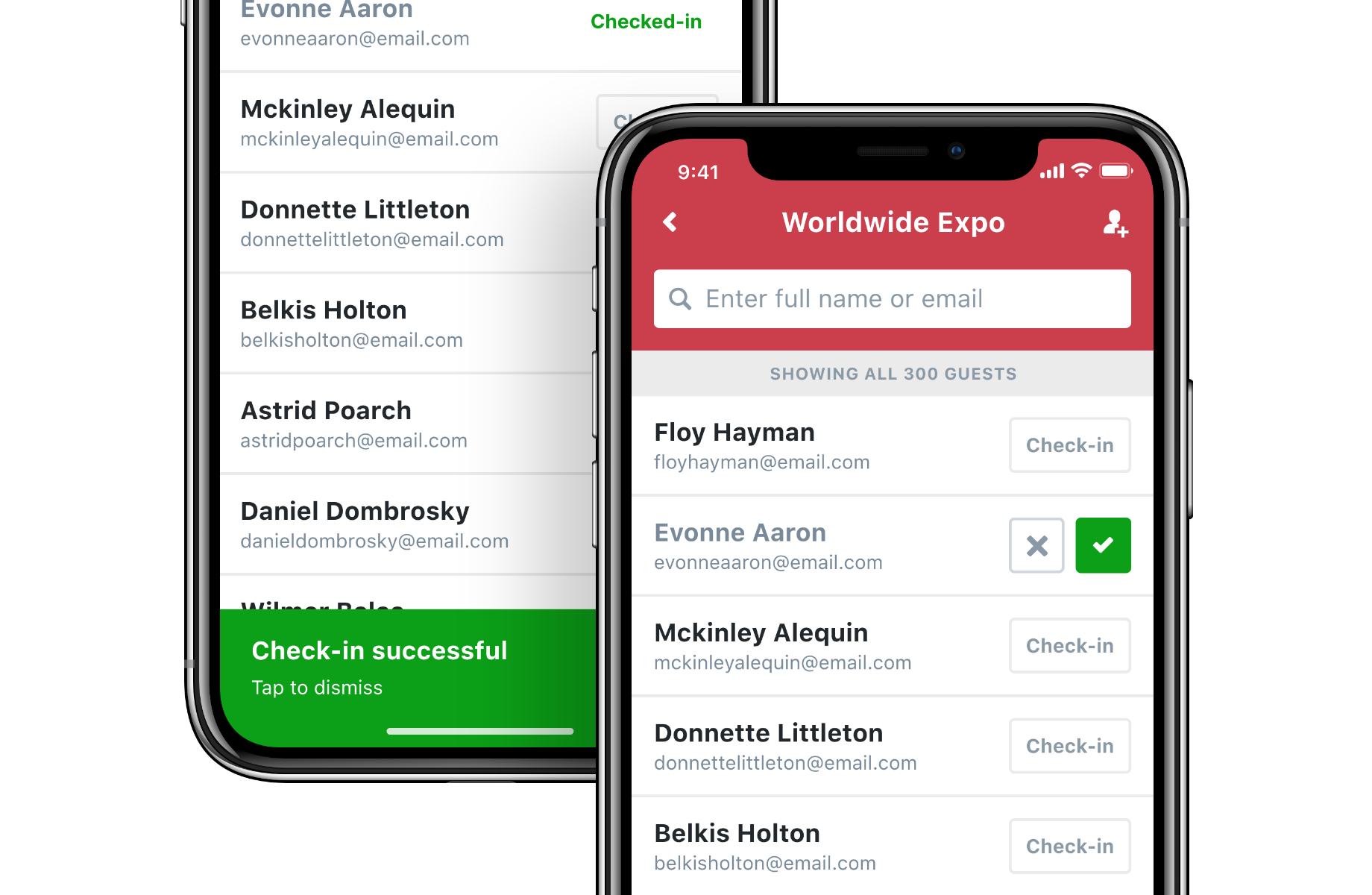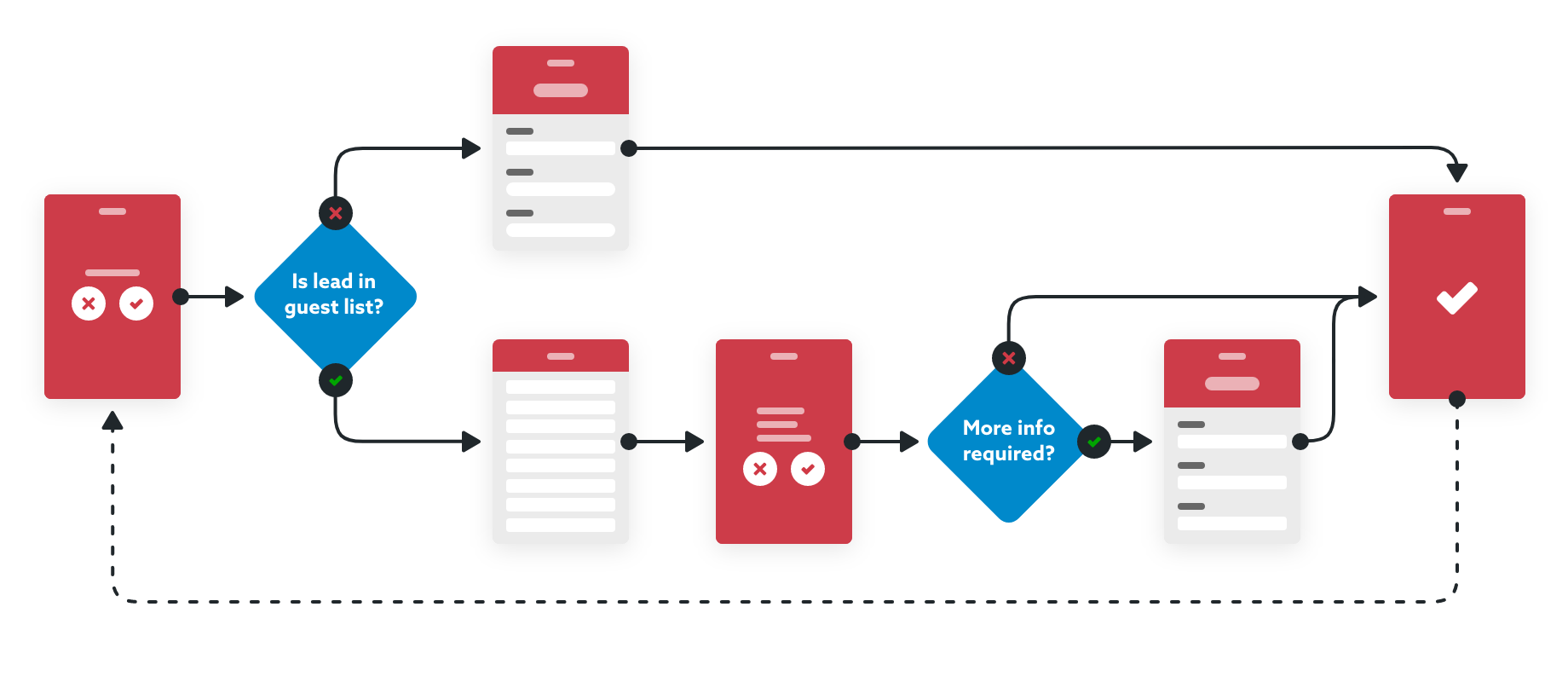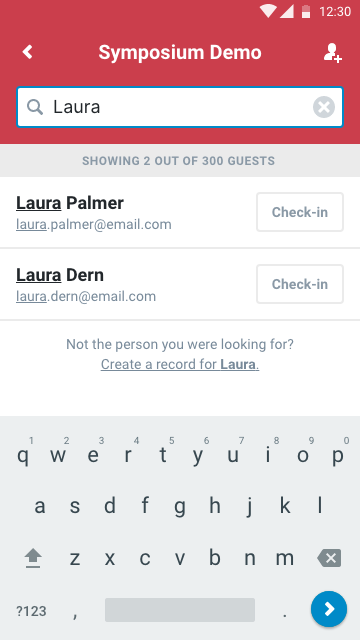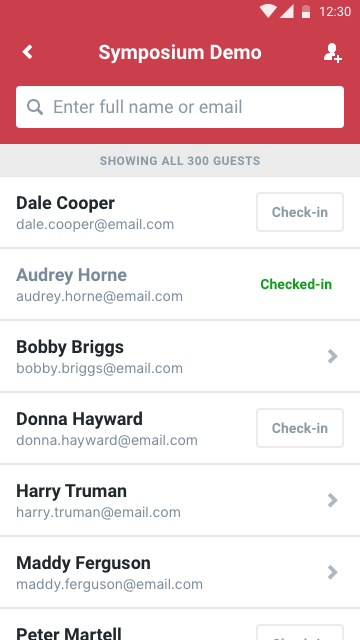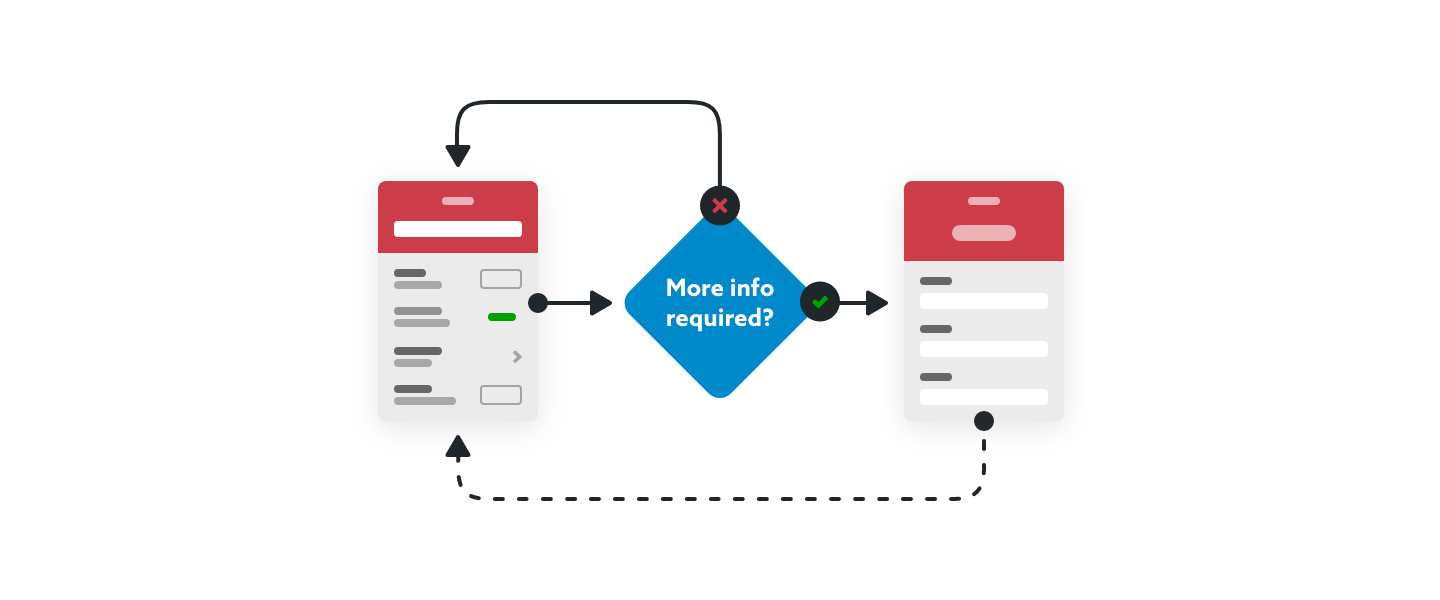Is the lead in the guestlist?
Our solution to fix this stress point was to remove the need for it completely. In its place, we designed an interface that can accommodate for capturing both new contacts and append information to existing ones.
By nudging the user towards the searching functionality, we can present them either an existing record of the lead they're looking for, or give them the option to create a new one that will prefill the name (or email address) with the search query, saving them time.
